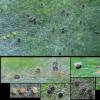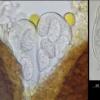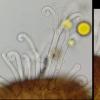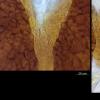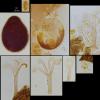
04-01-2026 17:45
 Stephen Martin Mifsud
Stephen Martin Mifsud
I was happy to find these orange asmocyetes which

03-01-2026 13:08
Niek SchrierHi all,We found groups of perithecia on a Lecanora

29-12-2025 17:44
Isabelle CharissouBonjour,J'aimerais savoir si d'autres personnes au

02-01-2026 17:43
MARICEL PATINOHi there, although I couldn't see the fruitbody, I

01-01-2026 18:35
Original loamy soil aside a artificial lake.The co

31-12-2025 19:27
Collected from loamy soil, at waterside (completel
Sawadaea bicornis on Acer campestre
B Shelbourne,
02-11-2024 16:34
• Sawadaea bicornis suggested by macro: Epiphyllous, many chasmothecial appendages, projecting all over, uninflated bases, convoluted apices.
• Confirmed by appendages in micro.
Habitat: On some leaves of Acer campestre, in a small grove of mature trees, with Quercus robur and Crataegus cf. monogyna, around a hedge between a field and road, part of a large area of agricultural land being 'rewilded' (Knepp Estate), Low Weald, southern England, early November.
Chasmothecia: Black and yellowish specks seen on most downy patches, gregarious, only seen on the top sides of the leaves.
Low magnification (20-40x): Patches formed of +/- sparse mycelium on the surface of the leaf, chasmothecia with more or less anchoring hyphae (detaching with age?), sub-globose to globose, initially yellowish, then blackish, when mature with many hyphae-like appendages protruding all over or from the top, bases uninflated, apices of appendages noticeably convoluted (branching), short conidiophores, hyaline, conidia appear to be growing in chains at the apices, but greater magnification required.
David Malloch,
02-11-2024 16:55

Re : Sawadaea bicornis on Acer campestre
Beautiful photos!
B Shelbourne,
03-11-2024 00:03
Re : Sawadaea bicornis on Acer campestre
Thank you. The credit must go to the fungus for producing such beautiful morphology.




